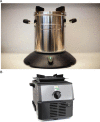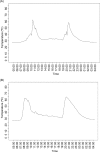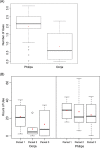Cooking practices, air quality, and the acceptability of advanced cookstoves in Haryana, India: an exploratory study to inform large-scale interventions
- PMID: 22989509
- PMCID: PMC3435509
- DOI: 10.3402/gha.v5i0.19016
Cooking practices, air quality, and the acceptability of advanced cookstoves in Haryana, India: an exploratory study to inform large-scale interventions
Abstract
Background: In India, approximately 66% of households rely on dung or woody biomass as fuels for cooking. These fuels are burned under inefficient conditions, leading to household air pollution (HAP) and exposure to smoke containing toxic substances. Large-scale intervention efforts need to be informed by careful piloting to address multiple methodological and sociocultural issues. This exploratory study provides preliminary data for such an exercise from Palwal District, Haryana, India.
Methods: Traditional cooking practices were assessed through semi-structured interviews in participating households. Philips and Oorja, two brands of commercially available advanced cookstoves with small blowers to improve combustion, were deployed in these households. Concentrations of particulate matter (PM) with a diameter <2.5 μm (PM2.5) and carbon monoxide (CO) related to traditional stove use were measured using real-time and integrated personal, microenvironmental samplers for optimizing protocols to evaluate exposure reduction. Qualitative data on acceptability of advanced stoves and objective measures of stove usage were also collected.
Results: Twenty-eight of the thirty-two participating households had outdoor primary cooking spaces. Twenty households had liquefied petroleum gas (LPG) but preferred traditional stoves as the cost of LPG was higher and because meals cooked on traditional stoves were perceived to taste better. Kitchen area concentrations and kitchen personal concentrations assessed during cooking events were very high, with respective mean PM2.5 concentrations of 468 and 718 µg/m3. Twenty-four hour outdoor concentrations averaged 400 µg/m3. Twenty-four hour personal CO concentrations ranged between 0.82 and 5.27 ppm. The Philips stove was used more often and for more hours than the Oorja.
Conclusions: The high PM and CO concentrations reinforce the need for interventions that reduce HAP exposure in the aforementioned community. Of the two stoves tested, participants expressed satisfaction with the Philips brand as it met the local criteria for usability. Further understanding of how the introduction of an advanced stove influences patterns of household energy use is needed. The preliminary data provided here would be useful for designing feasibility and/or pilot studies aimed at intervention efforts locally and nationally.
Figures







References
-
- Northcross AL, Hammond SK, Canuz E, Smith KR. Dioxin inhalation doses from wood combustion in indoor cookfires. Atmos Environ. 2012;49:415–8.
-
- Naeher LP, Brauer M, Lipsett M, Zelikoff JT, Simpson CD, Koenig JQ, et al. Woodsmoke health effects: a review. Inhal Toxicol. 2007;19:67–106. - PubMed
-
- Desai M, Mehta S, Smith K. Indoor smoke from solid fuels: assessing the environmental burden of disease at national and local levels. Geneva: World Health Organization; 2004.
-
- Ezzati M, Lopez A, Rodgers A, Vander Hoorn S, Murray C. Selected major risk factors and global and regional burden of disease. Lancet. 2002;360:1347–60. - PubMed
Publication types
MeSH terms
Substances
Grants and funding
LinkOut - more resources
Full Text Sources
Medical
Miscellaneous
